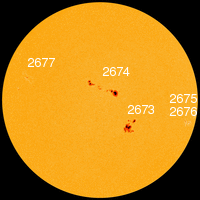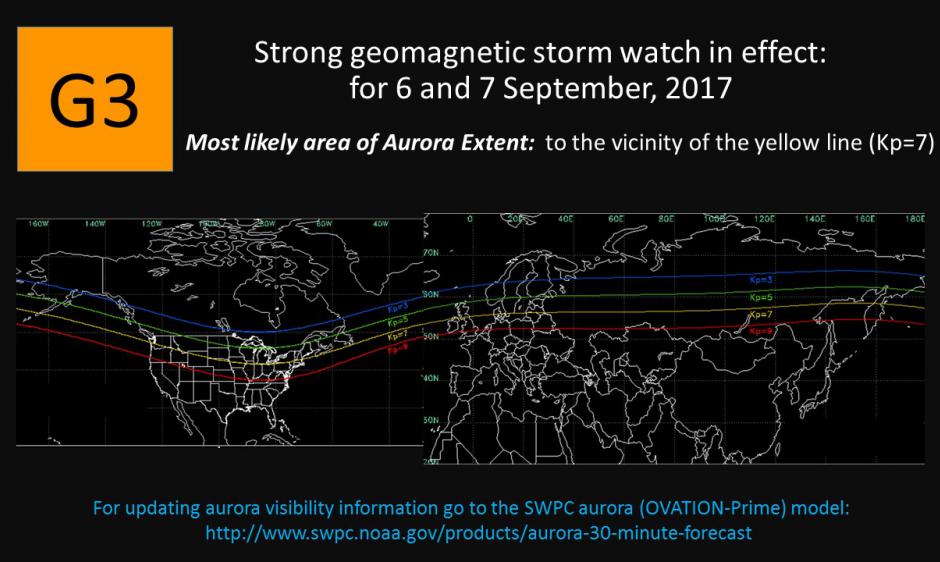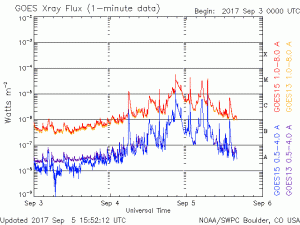
Over recent days the Sun has been covered in sunspots, something often not seen in times of solar minimum. At one point, the Sun’s had 5 separate sunspot regions on it’s visible disk, two of which were massive. The two large sunspot regions known as AR2673 and AR2674 are directly facing Earth. AR2673 has grown so quick and massive that it grew 10 fold in just one day. These two regions have been responsible for producing multiple M-class solar flares over recent days and due to complexity of its magnetic field, AR2673 now has potential for producing a X-class solar flare over the next few days. Along with the solar flares, on September 4th around 20:30 UTC the active sunspot AR2673 launched a coronal mass ejection (CME) towards Earth. NOAA Space Weather forecasters have analyzed the CME and have issued a G3 geomagnetic storm watch for September 6th and 7th.
The increase of solar activity can have consequences here on Earth. At high latitudes, communication systems could be impacted. “Expect GPS and radio communication issues at high latitudes,” wrote Dr. Tamitha Skov, a Space Meteorologist on Twitter. According to the National Weather Service’s Space Weather Prediction Center, solar flares are capable of producing strong x-rays that degrade or block high-frequency radio waves used for radio communication.


The forecast geomagnetic storm on the 6th and 7th will also have some impacts on Earth. Geomagnetic storms if strong enough, pose a threat to power grid operations. They can induce extra currents into the ground that can harm and disrupt the power grid, causing headaches for the operators. These storms also have the ability to degrade the accuracy of radio navigation systems such as GPS.
Not all geomagnetic storm impacts are bad, though. One of the most enjoyable side-effects of a strong geomagnetic storm is a vibrant aurora will glow in the sky over large areas. Aurora is also called “Northern Lights” in the Northern Hemisphere. Aurora chasers will be thrilled when this CME impacts Earth as that should result in widespread aurora at high latitudes and even the possibility for decent aurora at some mid-latitude states. States along the U.S. and Canadian border will certainly be in play for some aurora action if the current forecast validates.
One of the best ways to track and report Aurora activity is through the Aurorasaurus app. A free download for both iOS and Android platforms, citizen scientists can share and get aurora alerts should any light up their sky.
Sunspots are one solar feature that we will start to see less of as solar minimum approaches but they are fascinating and researchers are still eager to learn more about their complexity. These dark regions on the Sun are cooler than the rest of the Sun’s surface and that is why they appear darker. Generally they will appear as a single spot or multiple ones that are close together which will then be designated an official sunspot number by NOAA. The most recent sunspots , AR2673 and AR2674, were so large that they were visible to the naked eye this week. People can use their solar eclipse glasses from the August eclipse to safely view the sun for sunspots.